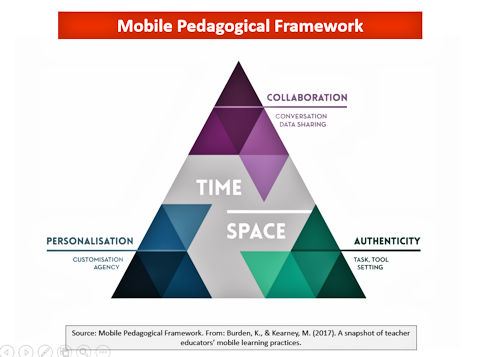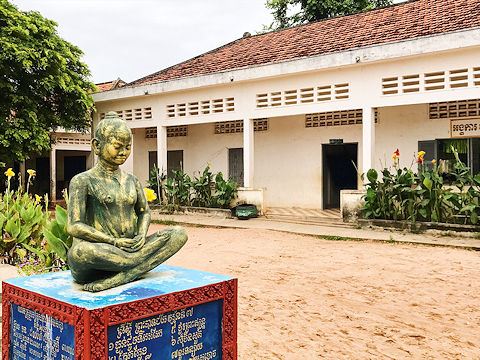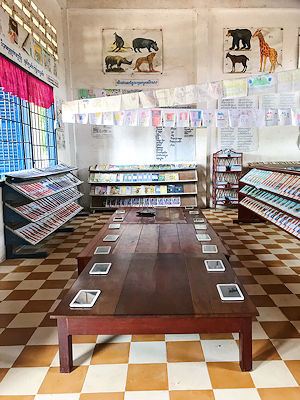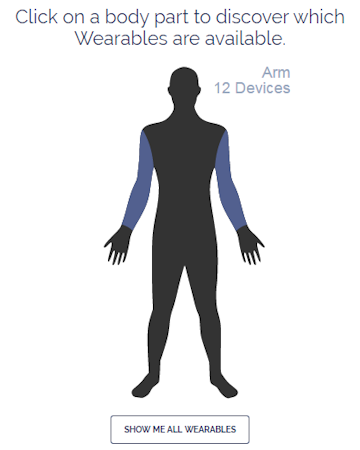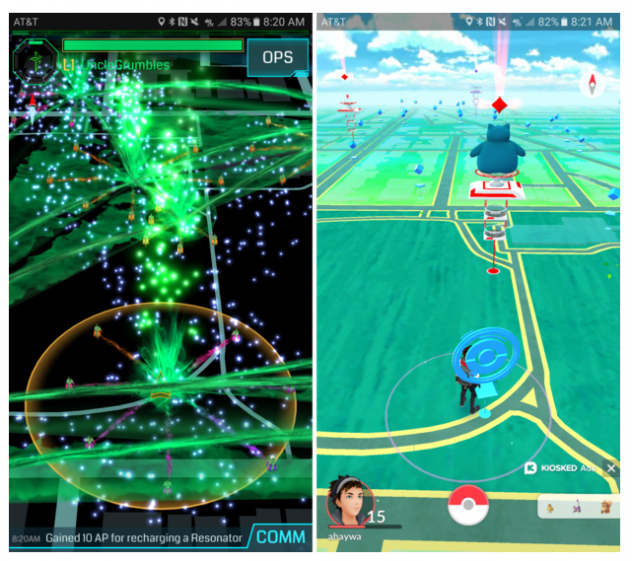WorldCALL Conference
Concepción, Chile
13-16 November 2018
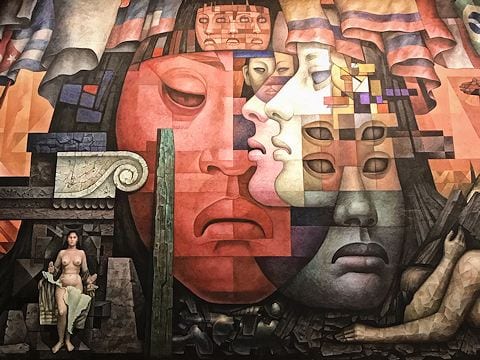
Excerpt of La Presencia de América Latina by Jorge González Camarena in La Casa del Arte, Concepción, Chile. Photo by Mark Pegrum, 2018. May be reused under CC BY 4.0 licence.
The fifth WorldCALL Conference took place this year in Concepción, Chile, drawing together presenters and attendees from across the world. The last WorldCALL I attended was 10 years ago in Fukuoka, Japan, and it was good to be able to once again join this global event. A common theme to emerge across the four days was the need for CALL educators to take into account the bigger political and social picture and, in an era of polarisation and isolationism, to help promote connections across languages and cultures.
In his opening plenary, WorldCALL then and now: Engagement, adaptation and change, Mike Levy began by asking how the language teaching profession can prepare students for the world in which we live, and what role technology and CALL can play in this. Referring to Chris Candlin’s work, he indicated that tolerance is essential to connecting the social and cultural worlds of learners outside the classroom and those worlds within the classroom. We now find ourselves in a context he described using the acronym PEST:
- Political = populist leaders, polarisation, fake news, alternative facts;
- Economic = big tech, trillion dollar companies, monopolies, inequality;
- Social = social media, division, delivery of news, publishing;
- Technological = artificial intelligence, machine learning, big data, algorithms, data analytics, predictive analytics, manipulation, disposable technologies, surveillance.
This year the UK became the first country to have a Minister for Loneliness; in this superconnected world, he noted, a need was seen to have such a ministry.
Academic disciplines, he suggested, are rather like castles separated from the world and each other. Taking a look at the language teaching profession, we see that common terms – tasks, input/output, texts – have technical definitions that differ from the general definitions in use outside the castle. Many learners are in fact interested in social, cultural or political issues affecting the areas where the target language is spoken; we should attempt to give them a chance to access authentic materials to learn about these conditions. When we change and simplify or grade texts, we do take something away from them. Authentic materials potentially give you access to the full range of human production and expression in all forms.
He went on to discuss CALL, pointing out that it is neither a single method, nor a single technology. It is important that we spend more time looking at what is happening in other castles; CALL can for example learn from the discipline of digital literacies. He mentioned Kathy Mills’ work on digital literacies, as well as my forthcoming work on digital literacies co-authored with Gavin Dudeney and Nicky Hockly. He then talked about predictive literacy in the context of Google searches, where possible questions are predicted by the search algorithm.
He concluded that we should seek engagement and connection with the wider world, not withdrawal; we should seek out cognate disciplines as they may provide new ideas; and we should harness the opportunities but be aware of the threats. Ultimately, he said, language teachers can offer a gift of understanding and tolerance in a fractured world; they are a force for good and they have the power to change lives.
In her plenary on the final day, Recalibrating content-related strategies for language learning in the digital age, Carol Chapelle spoke about the fact that language is always used for a purpose – conveying content, building relationships – and hence is always connected with content. However, the content in our field is often under-analysed. Typically there are two strategies: we assume that students know their discipline-related content, or we select humanities-based topics of general interest. Technology, however, offers greater potential, because students have access to content of all kinds. There is the potential for building content knowledge about different subjects, as well as building relationships. Teachers need strategies for employing digital technologies to maximise the use of content for language learning; the old strategies are not helpful because they assume limited content, whereas now there is an excess of content available. She focused on three key content-related strategies available to teachers:
- Corpus-based pedagogy (advanced): We should bear in mind that students in each field need to read and write different genres; they need help to learn the language used in their fields for knowledge building. Here, we need an understanding of how language is used to build knowledge.
- Virtual exchange (intermediate to advanced): The dreams of previous generations of CALL are now being realised through virtual exchange (VE) on various social media platforms. Its history includes distance learning, e-Tandem, cross-cultural collaboration, telecollaboration, and now virtual exchange. VE has been defined by Robert O’Dowd as involving the engagement of groups of learners in extended periods of online intercultural interaction and collaboration; it involves partners from other cultural contexts or geographical locations, is an integrated part of educational programmes, and takes place under the guidance of educators and/or expert facilitators. In VE it is important to consider content that will prompt good cross-cultural learning rather than failed communication. Here, we need an understanding of how different types of content are negotiated in collaboration.
- Multimedia narrative for culture learning (beginners): In the past, meaning-based language learning was largely relegated to higher language levels in the form of literature; the future should involve language and content at all levels, beginning with multimodal cultural content, e.g., in the form of narratives. Here, we need an understanding of how to identify important cultural artefacts and narratives in multimedia materials.
She concluded that content and language are very much interrelated and are both important building blocks in language learning. Students need not only to learn to speak the language, but to have something to speak about.
The theme of making linguistic and cultural connections, often through virtual exchange or VE, surfaced in many papers at the conference. Our symposium, CALL for help: Critical CALL for diversity, inclusion and sustainability, focused on how CALL can reach and connect diverse and often under-served populations of learners. Moderated by Liliana Simón and introduced by Phil Hubbard, the symposium consisted of live presentations by Louise Ohashi and Mark Pegrum, and video presentations by Mirjam Hauck, Sarah Guth and Francesca Helm.
In her paper, Reaching beyond conferences: The potential of CALL in supporting diversity and inclusion, Louise Ohashi talked about the reasons why some teachers might not be able to attend conferences: these include financial reasons, family reasons (e.g., looking after children or elderly parents), inability to get permission from employers, a reluctance to interrupt their classes, and inability to obtain a visa or difficulty obtaining one. Some teachers compensate by watching live-streamed content and/or prerecorded talks; others participate on Twitter, Facebook and other social media platforms; others contact presenters for more information; and still others read conference proceedings. There are some, however, who don’t try alternative means to participate, in the belief that it is essential to be part of the conversations that take place in the social spaces of conferences. Virtually connecting, she suggested, is one way of having speakers at conferences interact in real time with those who are not at the conference but would like to ask questions and have discussions. It is also important to use social media to advertise scholarships, the availability of child care facilities, and where to access presentations online, etc.
In my own presentation, Connecting cultures via intercultural, ethical and critical literacies, I referred to the revised Framework of Digital Literacies that Gavin Dudeney, Nicky Hockly and I have created this year, due for publication shortly in The European Journal of Applied Linguistics and TEFL. I spoke about the importance of those digital literacies that can help teachers and students to build bridges between cultures, and which are particularly salient in an era of polarisation, misinformation and disinformation.
In her presentation, CALL and critical digital literacies for a sustainable future, Mirjam Hauck referred to Freire, speaking about the importance of reading the world critically and acting in the world to change it. Digital literacies have both functional and critical aspects, and the latter are essential to the development of agency. Too often, frameworks of digital literacies present literacy as universal and decontextualised. Any definition of digital literacies, however, is inherently political. It is not enough for digital literacies to help people fit into today’s inequitable societies; rather, a critical perspective is needed to help students develop agency in the world. Literacies are necessary for public engagement, global citizenship, and the enhancement of democracy.
VE, she suggested, naturally involves a sociopolitical context – indeed, it brings together at least two sociopolitical contexts in each case. She mentioned EVOLVE (Evidence-Validated Online Learning through Virtual Exchange). Such projects link the deep impact of intercultural exchange with the broad reach of digital technologies. In VE tasks, learners should develop a critical perspective on both the linguistic and non-linguistic elements of digital communication.
In their presentation, CALL for help: The place of critical CALL in building a sustainable, diverse and inclusive future, Sarah Guth and Fran Helm described VE as a kind of experiential and collaborative learning, allowing the development of transversal skills including intercultural awareness, foreign language skills, and digital literacies. It also offers opportunities to build diverse personal relationships, supports preparation for work and civil engagement in a global context, and piques students’ interest in study abroad. They noted, nevertheless, that technology can pose a risk when combined with neoliberal, neocolonial attitudes that may lead to a one-way transmission of knowledge from the developed world for the benefit of refugees or other under-served students.
VE can open up perspectives on other social realities, but we need to expand its reach. To date, it has been mainly East-West or North-North, but we need to involve all kinds of people in virtual exchanges. VE can also work within a single country, for example with young people from urban and rural areas, allowing them to get to know each other and promoting social cohesion.
In his presentation, Online learning through virtual exchange: A new role for CALL experts, Sake Jager talked about telecollaboration/VE having moved from language learning to content and language-integrated learning (CLIL) and now to content learning (where language learning is not necessarily an objective). He pointed out, with reference to De Wit and Leask (2015), that with the internationalisation of the curriculum has come a shift of focus from mobility for the elite to curriculum and learning outcomes for all students, whether mobile or not. Telecollaboration outcomes that are relevant in this context include language skills, intercultural competence, and digital literacy. There can be cross-national and cross-disciplinary perspectives on learning content. VE goes beyond languages through initiatives like UNICollaboration, the Erasmus+ Virtual Exchange (where European universities can connect their students with students from the southern Mediterranean, with a view to building intercultural understanding and undermining radicalisation), and EVOLVE. EVOLVE helps universities to implement VE by providing online training and support; it conducts research on VE at learner, educator, and institutional levels; and it actively promotes the results and engages with policy- and decision-makers at university, university network, and European levels.
In her presentation, Be the change, take the challenge: Teaching sustainable development goals, co-authored with Barbara Anna Zielonka, Shirlene Bemfica de Oliveira suggested that literacy practices with an emphasis only on the linguistic aspects of communication do not meet the demands of students in the contemporary, globalised world. Costa (2013) mentions that mobile technologies offer multiple affordances: negotiating interactive content, communicating with native or non-native speakers, making publications, recording videos, sending voice messages, and engaging in social actions. She spoke of the Be the Change, Take the Challenge project which focuses on human rights via a selection of the UN Sustainable Development Goals (SDGs), and on English learning through the SDGs; in 2017-2018, it involved 101 schools worldwide. Teachers can interact with colleagues abroad and share materials through Loomio; however, sometimes lesson plans which are used in one location – such as those focusing on gender equality and LGBT+ issues in the Brazilian context – might not be able to be applied in other contexts. She showed an example of an activity on Padlet, where high school students from around the world were asked to comment on problems they perceived in their own societies. In another task, students used Adobe Spark to create multimedia posters saying how they would like the world to be in 2030. Most teachers saw this project as offering possibilities and opportunities, and as promoting the use of the English language for real world purposes. Teachers developed new perspectives on technologies, both as a means of learning English, and as a means of prompting social activism.
There were a number of papers that addressed mobile learning, directly or indirectly. In his talk, Reflective practice: Implementing 21st century skills in teaching EFL, Hiroyuki Obari suggested that mobile technologies involve a paradigm shift where students are more in control of their own learning. Mobile technologies can also facilitate seamless learning. He went on to talk about 21st century skills, including the 7 Cs (critical thinking, creativity, collaboration, cross-cultural understanding, communication, computing & ICT literacy, and career and learning self-reliance), but indicated that an additional important skill involves understanding and knowing how to co-exist with AI. He contrasted his classroom in 2014, where students were using iPads, and 2018, where students are making use of AI in various ways – Google Home and Alexa speakers, as well as Google AR/VR headsets – alongside tablets. He concluded that 21st century education should involve a combination of the following elements: blended and flipped learning; 21st century skills; a focus on Bloom’s taxonomy; social constructivism; ICTs/mobile technologies; and student autonomy. Moreover, he said, students need to expand their worldviews and find the purpose of their lives.
In his presentation, Exploring mobile support for English language teachers in a context of conflict: The case of informal Syrian refugee teachers in Jordan, co-authored with Shai Omali, Susan Dawson, Nasmi Al Masri and Heba Hamouda, Gary Motteram spoke about an ESRC-funded project called Supporting and developing teachers in contexts of conflict and disturbance. It was designed to support the development of teachers’ knowledge and skills to: design courses and resources/materials; make use of a variety of free online resources; create an online/mobile resource bank or course; evaluate the resources/course; and become reflective teachers through being part of the research project. Syria is 149 out of 188 on the HDI (having slipped 29 places since 2010). There are 72 mobile phone subscriptions per 100 people in Syria, and most people in refugee camps have access to a mobile phone.
The project needed a mobile app that could work in a variety of contexts, worked offline, and was authorable. They chose the Android app Ustad Mobile (see their blog for a summary of the projects in which they have been involved). You need three tools to create materials: eXe Learning (to create ePub files), the Ustad Mobile app, and H5P for additional interactivity. In the accompanying WhatsApp group, 24% of the communication was coded as interpersonal, 30% as organisational, and 46% as developmental. There were discussions about classroom methodology but largely based on teachers’ experiences rather than literature reading, and there were discussions about language usage. He went on to show a number of examples of conversations where learning and development were taking place. There was development of both linguistic and pedagogical knowledge; reflection; and evidence of the sociocultural realities of teachers and students.
In his talk, Language learning on tap! Twitter as an autonomous language learning tool – The learners’ perspective, Fernando Rosell-Aguilar mentioned that Twitter was seen very early on as a potential language learning platform, allowing linguistic and cultural input; writing and speaking output; and interaction with native speakers, fellow learners, teachers, language learning institutions, and chatbots/virtual assistants. Research studies have identified positive effects of Twitter, e.g., on target language output, developing a sense of community, and increasing the quantity of communication; but often these studies have been small-scale and carried out by teachers researching their own students.
He conducted a 30-question survey containing multiple-choice and open-ended questions, and offered in 4 languages; he received 401 responses in total. Participants had been learning a variety of different languages on Twitter. The majority were not studying formally but were using Twitter as part of their informal study, and most were not living in an area where the target language was spoken. The majority tweeted at least sometimes in the language they were learning. Most said they focused on both meaning and form in the target language they were reading; 62.9% said they had learned new vocabulary, but only 22.9% had learned new grammar rules. Most had learned facts about the places where the target language is spoken, most commonly related to news and current affairs. The majority of respondents agreed that they had improved their knowledge of the target language, and of target language areas. Some didn’t like the use of informal language on Twitter, but others liked the way it complemented the kinds of language learned in courses or textbooks; and some struggled to express themselves in 140 characters, whereas others liked this limit.
In his talk, Using WhatsApp for teaching French as a FL, Daniel Chan began by referring to Mark Zuckerberg’s comment that messaging is one of the few things people do more than social networking. WhatsApp is currently the most widely used messaging app in the world. It is generally already known to students and is usually accessed on their mobile phones. It can be used to facilitate communication, broadcast and share information and resources, and create discussion groups. It is an ideal way of fitting language learning into students’ lives. WhatsApp can also be used to post images of work done by students in class. Students’ responses can be corrected online.
When surveyed, his students indicated their appreciation of the fact that WhatsApp creates learning opportunities, allows collaborative and multimedia learning, preserves records of content for revision, and allows compact and succinct learning. In terms of challenges, some felt the groups were too public for their questions; that much depends on the dynamics of individual groups; that there is a danger of spamming and missing important information; and that there is pressure both on the students to respond, and on the teacher to respond quickly enough. Students wanted the teacher to animate the groups more, and to integrate the audio function to practice pronunciation and oral production.
A number of other interesting topics surfaced in presentations across the conference. In her talk, Silence as a challenge: How online language teachers deal with the void, Ursula Stickler noted that communication mediated through technology is different from face-to-face communication: there are delays in communication and potential technological faults, but beyond this, there is a lack of external cues (space awareness, proximity markers, shared environmental information) and there can be differences in levels of digital literacies (including the use of substitute cues like emoticons, emphasis and images). Online pedagogy needs to be based on understanding the communicative differences, limitations, and opportunities.
There has been quite a lot of research on silences in language teaching, which can have didactic, social and pragmatic, gendered, and culturally influenced (e.g., Confucianism) aspects. Online silence may be deliberate or the result of a technical glitch. One way of investigating online silence is with eye-tracking: this shows where a user’s attention is focused; and teachers’ and students’ gazes can be tracked in parallel and compared (though there are technical challenges in this). Online silence may be purposeful, but it may be unexpected (e.g., connected with turn-taking or politeness) or technical. Research indicates that teachers’ and students’ perspectives on silences differ (e.g., teachers may give room for answers but students may be experiencing cognitive overload), with some areas of overlap (e.g., cultural divergence from teachers’ perspectives may correspond to politeness/turn-taking from students’ point of view). Teachers may sometimes need to offer technical help; accept surface excuses; and stay calm in settings where they cannot recognise students’ reactions in the same way as in face-to-face teaching. Teaching online is not just about teaching language, but about teaching the skills of online communication.
In his presentation, Gamifying teacher professional development through Minecraft MOOC, Vance Stevens explained that over the last 40 years he has taught English through behaviourist and cognitive approaches, then communicative approaches, followed by communities of practice, connectivism (aligned with the original idea of MOOCs as community-driven), and most recently gamification. He indicated that Minecraft has caught the attention of many educators over the last decade; it promotes critical thinking, collaboration, problem-solving, language and communication, and has been used for architecture, engineering, chemistry, mathematics and coding, in addition to language teaching. Gamification, he said, is about learning not in a top-down format, but by exploring in a bottom-up way. The challenges for teachers are: penetrating Minecraft communities of learners; the complexity and depth of the game; and understanding how students will interact and communicate with each other in Minecraft, and how they will engage in self-directed critical/collaborative learning. The EVO Minecraft MOOC started in 2015 to address and resolve these problems, and newcomers are welcomed every January/February.
In a talk showing the power of data visualisation, Mapping Astoria: Engaging with the multilingual city using digital tools, Stephane Charitos and Nelleke Van Deusen-Scholl indicated their interest not only in the social turn or multilingual turn, but the spatial turn. They suggested that students can be engaged through place-, project- and community-based education. Astoria is a multilingual area of Queens, New York. An incipient project was set up in critical cartography, linguistic ethnography, and geo- and sociolinguistics; it was about considering language practices in spatial terms and reflecting on the links between language, space and identity. The idea was to create a ‘thick map’ of Astoria, with layers anchored to locations.
They spoke about ProM, a repository of pedagogically consistent modules related to language learning in given community spaces, which will be made public in due course. Example projects include a Korean language brochure and oral tour of the Yale campus; another, My New Haven, involves a photosafari and linguistic landscape, focusing on the use of Spanish; and yet another, StoryMap: My Happy Place, involves students carrying out multimodal digital storytelling in Korean.
They concluded that place-, project- and community-based initiatives can help students to reflect on the relationship between space and place (the latter having meaning attached to it); to identify and curate the symbols and habits of language; to critically explore the multilingual hyperdiversity that characterises urban centres, and challenge the tenets of a national ideology; to find innovative solutions that undermine the implicitly monolithic linkage between language and place, and champion different ways of visualising that relationship; to invent new ways of visually exploring the endless individual trajectories that make up today’s multiethnic, multilingual urban environments, and present connections between a city and the languages it speaks.
All in all, the message that threaded its way through many of the varied conference papers was that in the current historical moment we should be taking every opportunity to emphasise the role that languages and technologies can play in highlighting diversity, accommodating difference, and making connections between people and cultures. It will be interesting to see how the conversations around these themes have progressed when WorldCALL convenes again in another five years.













